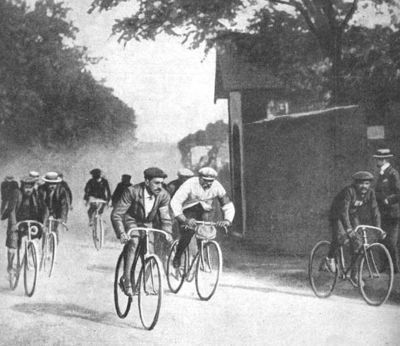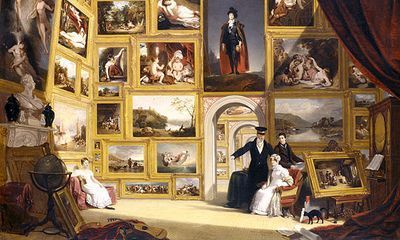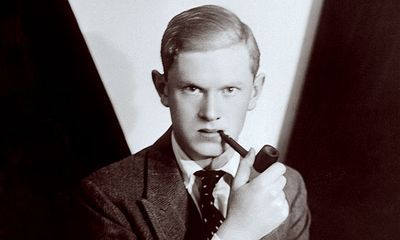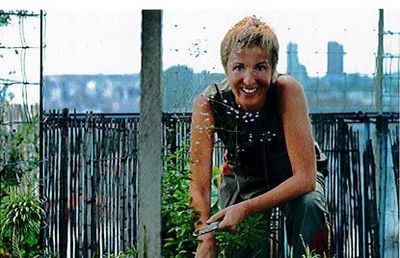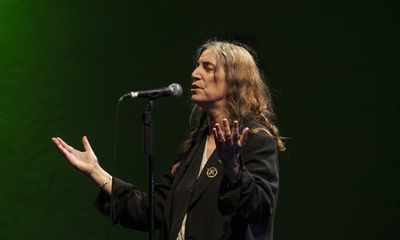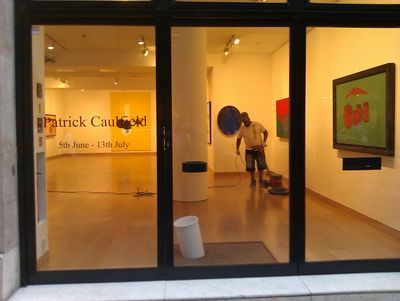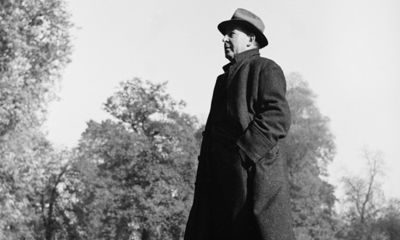Peter Stothard's Blog, page 58
July 5, 2013
Art under Attack
By THEA LENARDUZZI
Stepping off the chewing-gum-peppered pavements of
the City of London this morning, I found myself in a cool antechamber to the chapel
of the Worshipful Company
of Mercers. Having arrived early, I drifted between sombre
portraits of the grand old men of the Company’s history as I waited for others
to join me. The occasion was the unveiling of Tate Britain’s
next major exhibition, Art under Attack:
Histories of British iconoclasm (opening in October), which aims
to trace incidents of physical attack on our art from the 1500s to the present
day.
Once gathered, we
were invited to move beyond the table of breakfast pastries into the chapel
where “Statue of the Dead Christ” – one of the show’s central works, on loan to
the Tate from the Company (hence this morning’s venue) – lay in wait.
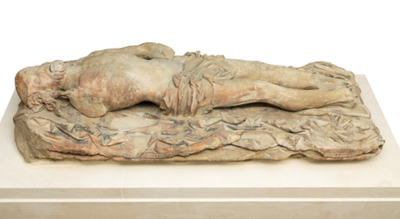
"Statue of the Dead Christ", c.1500-1520; Stone on limestone plinth; the Mercers’ Company
This delicately carved figure of Christ removed from the Cross, his features (and limbs, were
they still there) contorted by the early stages of rigor mortis, ribs and veins
seeming almost to pierce the surface, is a powerful historic reminder of this
country’s relationship with the visual arts. Dating between 1500 and 1520, the
statue fell prey to Protestant iconoclasts, who stripped bare monasteries
across the land as part of Henry VIII’s systematic drive for more money to keep
him in the style to which he had grown (the right word) accustomed.
This statue will
join others from the period – mostly limbless, with great gouges where books
were cleaved from the stone. These were not acts of opportunist vandalism;
those armed with the axes knew very well that sculpted books were lined with lead, a
material of greater value than any amount of stone.
The lead, found there
and elsewhere in the monasteries, was generally melted down on site to form
ingots – and for this great fires were required. How fortuitous, then, that
monasteries had libraries too – so many pages to burn. (In the press
conference which followed our preview, Tabitha Barber, one of the exhibition’s
curators, offered the startling if difficult-to-substantiate statistic that 90
per cent of pre-Reformation images have been lost, and all that remains is
mutilated: one poignant photograph taken in 1907 following an excavation at
Winchester Cathedral shows row upon row of disembodied heads and limbs.)
Alongside these
statues will be exhibited religious artworks and manuscripts (two fragments from the tomb of Thomas
Becket show how literally the 1538 Court Order to deface all images of the saint
were taken).
But, if we are
to cover 500 years of this stuff, we must trot on to the second phase of the
exhibition, which covers secular forms of iconoclasm. Public sculptures are
obvious targets. Such is the case of the statue of William III, erected on
College Green in Dublin in 1701, and bombed in 1836 (beheading him) and in 1928
(doing away with most of the rest). This exhibition is the first to give Billy
his head back.
There is, too, a
portrait of Oliver Cromwell, which will be hung upside down by the Tate, in
keeping with the wishes of Prince Frederick Duleep Singh (1868–1926) to turn it
into a statement of heart-pounding monarchist politics. (Another difference
between vandalism and iconoclasm, our hosts pointed out, is that images must
remain recognizable if their, let’s call them, alterations are to have any real
political value.)
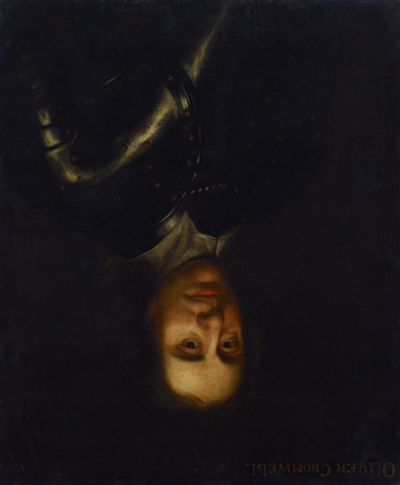
British School, "Portrait of Oliver Cromwell" (hung upside down); © Inverness Museum and Art Gallery
Never ones to miss a party, the Suffragettes are represented here by two paintings from a
series of thirteen attacked in Manchester galleries – Edward Burne-Jones’s “Sibylla
Delphica”, 1898, and G. F. Watts’s “May Prinsep (Prayer)”, 1867 – and one from
the National Portrait Gallery – John Singer Sargent’s “Portrait of Henry James”, 1913.
There is also a toffee hammer from 1911 used in the attacks (yes, really) as
well as the surveillance photographs issued by the Police to all museum
wardens, identifying the usual suspects. In the 1960s, the feminists took up
the mantle, if not the toffee hammer – throwing paint-stripper on Allen Jones’s
“Chair” (1969) and melting his lady's acrylic face.
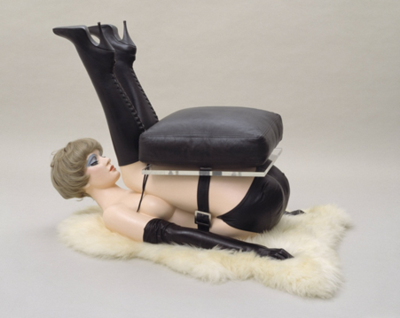
Allen Jones's "Chair", 1969; Tate © Allen Jones
A third phase of
the exhibition considers how the Destruction
in Art Symposium (DIAS), which took place in London in 1966, made of breaking
and breakages an aesthetic
in their own right. Work by Yoko
Ono and Michael Landy will be joined by Ralph Ortiz’s “Piano Destruction”, which protested
against daily obliterations at home and abroad (specifically, Vietnam). One of a
series of public “destruction events” undertaken by him, it
will be displayed along with the BBC’s original audio recording of axe meeting
piano – which should make for a relaxing experience.
A final glimpse of the exhibition comes
in the form of “One Day You Will No Longer Be Loved II” (2008): one of a series
of historic portraits commissioned by the great and good, playfully doctored by
Jake and Dinos Chapman – the message being something along the lines of
“Thought your grandeur would last? Well, your portrait’s been sold (to us). And
you’re dead.”
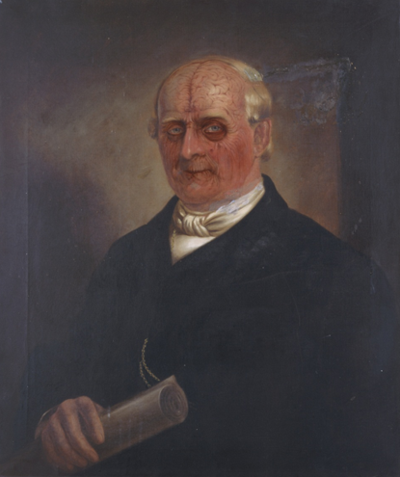
Jake and Dinos Chapman, "One Day You Will No Longer Be Loved II" (No.6), 2008 © Jake and Dinos; Chapman Photo: Todd-White Art Photography; Courtesy White Cube
I can’t help but think, looking
again at the Mercers’ private collection, what fun the brothers could have in here . . . .
July 4, 2013
The 100th Tour de France
By ADRIAN TAHOURDIN
The 100th Tour de
France (la Grande Boucle) hit the road last Saturday in the wake of the
decision to strip Lance Armstrong of his seven consecutive Tour triumphs (1999–2005)
for doping offences. In a rare interview with Le Monde, published last Saturday, Armstrong asserted that “it’s
impossible to win the Tour without doping”. The paper has always been a little
sceptical about Armstrong’s success; as if in retaliation, he had only granted the
paper one previous interview (in 2003).
The Texan rider has always exuded an
air of arrogance and supreme self-confidence. He was a friend
of George W. Bush, although no supporter of the Iraq invasion of 2003; he
drank beer rather than wine; spoke poor French; and generally did little to
ingratiate himself with the Tour authorities. Perversely perhaps, it was hard not to like him. And
then there was the remarkable story of his recovery from testicular cancer,
described in his high-octane autobiography It’s
Not About the Bike. Armstrong’s downfall and disgrace were shocking
in their totality, even if there was an inevitability about the process – like
watching a car crash in slow motion. But the Monde interview shows him largely unrepentant and bearing more than
a hint of scapegoat syndrome.
The most recent Grande Boucle visited
Corsica for the first time in its history for the first three stages, which is
pretty extraordinary given that the three-week race makes regular raids into
Belgium, Switzerland and even England (where it’s due next year: Sheffield).
Corsica seems made for the event: mountain roads, searing heat and spectacular
scenery. Insuperable logistical challenges have been cited as the reason for
the oversight up till now. Let’s hope it returns there soon.
According to a recent opinion poll
conducted in France, 40 per cent of French people are indifferent as to whether
the Tour continues or not; it is said to have lost sporting credibility. Le Monde, which has always given
extensive coverage to the event, this week had successive headlines of “Once
again there are doubts as the Tour gets under way” and “The peloton . . . wants
to escape from its past”. The past being 15 years of flagrant doping – several winners beside Armstrong have been stripped of their laurels – but one that goes back further too.
When, in 1967, the British rider Tom
Simpson collapsed and died on Mont Ventoux (the Bald mountain) in temperatures
of 35C, the autopsy revealed traces of amphetamine in his blood. At the time,
water was forbidden during the race but Simpson was known to take brandy on
board – a lethal cocktail then. In Geoffrey Wheatcroft’s centenary History of the Tour de France (2003),
the author reproduces a quote from the French rider Jacques Anquetil in the
year of Simpson’s death: “You’d have to be an imbecile or a hypocrite to
imagine that a professional cyclist who rides 235 days a year can hold himself
together without stimulants”. This year’s race will be visiting Mont Ventoux.
According to Wheatcroft, the mountain holds the record for “the strongest gust
of wind ever recorded on Earth”: 320 kph. It is desolate, intimidating and
majestic.
The most recent stage this year
(Wednesday the 3rd) took the riders from Cagnes-sur-Mer, near Nice,
to Marseille, a spectacular 228 km stage against a backdrop of massive
escarpments, past rust-red pine-clad rock formations and olive groves before
descending into France’s second city, on the approach to which the riders were
reaching speeds of 80 kph (50 mph): no time to admire the scenery; that’s left
for the TV viewer, who is extremely well catered for, even to the point of
being able to soak up views of the famous calanques,
or coves, between Marseille and Cassis (not strictly part of the route, but
breathtaking when seen from a helicopter camera out at sea). The Tour may be
all about roadside atmosphere – and there doesn’t appear to have been any
diminution in its popularity on the road – but anyone who has ever been will tell you
that the riders go past in a flash and it’s then all over. Alas, the sofa is
best in this case. To add to the pleasure, the stage was won by the British
rider Mark Cavendish, who now has a staggering 24 stage wins (the all-time
record, held by the Belgian Eddy Merckx, is 34). It surely won’t be his last
stage win this year.
July 3, 2013
In this week’s TLS – a note from the Editor
There have been many great British art collectors, Angus Trumble writes in
this week’s TLS, but those seeking to discover exactly how many and how
great have often found obstacles in their path. Key-jangling housekeepers,
out-of-date inventories and minimal labelling all impeded those
investigating Britain’s collections in the centuries before public museums
opened our eyes to what was truly here. The story told in James
Stourton and Charles Sebag-Montefiore’s new book is as much about
shipping agents as it is about aesthetes. There was a lordly collector of
Van Dyck who owned “twelve whole-lengths, the two girls and six
half-lengths” without leaving any more information about what precisely
these paintings might have been and whether they genuinely were by Van Dyck.
There are many sad reminders of how much great art left Britain in the “sale
of the century” that followed the execution of Charles I.
In the four years in which Savonarola controlled Florence, any paintings that
depicted pagan scenes might be part of public fires, blazes of luxury goods
in city squares, perversions of the Italian carnival that were designed, as
Bernard Manzo explains, “to make anarchy itself subservient to Christ”. He
is reviewing Donald Weinstein’s “quizzical” biography of Savonarola, priest
of purity and penitence, a man who took on the Borgias, died in flames of
his own and left a legacy that is shared today among many shades of
Christianity and none.
Rooms in art galleries are normally rectangular. Peter Thonemann this week
cites a Soviet city planner who used to link private ownership to
right-angled walls and circular structures to Communism. Thonemann notes the
lack of angles in pastoral societies and the steep decline in British
roundhouses after the Roman invasion. But he is not sure that a preference
for round buildings reflects “a
fundamentally more egalitarian mindset”.
Stanley Weintraub describes how Bernard Shaw came to write less about art
galleries and, under the byline Corno di Bassetto, more about music.
Peter Stothard
Miss Evelyn Waugh
By MICHAEL CAINES
A brief review of a Brief Life in this week's TLS (Violet Hudson's short piece about Michael Barber's Evelyn Waugh biography) is all the excuse I need to repeat an old TLS story. This one, I think, is up there with the classic "Lit Supp" dismissal of one of its own contributors, T. S. Eliot:
Both Derwent May, in his centenary history of the TLS, and Selina Hastings in her Waugh biography record how, in 1928, the paper reviewed Waugh's first book, on Rossetti. The reviewer was the poet and artist T. Sturge Moore (writing anonymously, of course), who fell into the trap of thinking that an "Evelyn" could only be a woman – a woman who didn't know as much about art as he did.
"Miss Waugh", Moore declared, "approaches the 'squalid' Rossetti like some dainty Miss of the sixties bringing the Italian organ-grinder a penny . . . . Though alert and courageous, she surely sees but half, and is more inadequate over the poetry than the pictures."
Miss Waugh wasn't so inadequate that "she" couldn't respond with a letter, which was published the following week:
"My Christian name, I know, is occasionally regarded by people of limited social experience as belonging exclusively to one or other sex; but it is unnecessary to go further into my book than the paragraph charitably placed inside the wrapper for the guidance of unleisured critics, to find my name with its correct prefix of 'Mr,' Surely some such investigation might in merest courtesy have been taken before your reviewer tumbled into print with such phrases as 'a Miss of the Sixties.' . . ."
Hastings calls this a "small masterpiece of comic offensiveness", and quotes Rebecca West cheering Waugh on: "your letter to the Times Lit. Sup. . . . was a model of how one might behave to that swollen-headed Parish Magazine".
Matters did not immediately improve. The mistake about Waugh's sex was repeated the following year; the paper apologised. Then Waugh's own publishers, Chapman & Hall, presumably trying to make up for the fact that the TLS hadn't deigned to review Vile Bodies, took out an advertisement for it – only to describe it as "Vile Bodies by ALEC WAUGH" – ie, Miss Waugh's then more popular brother. Now it was Chapman & Hall's turn to apologise. It is not clear whether Rebecca West's opinion of the paper changed when it rejected one of her cherished poems, submitted for publication under a pseudonym.
After that, May says, things did improve, no doubt helped in part by some appreciative reviews and the appointment of Miss Waugh's friend Alan Pryce-Jones as Editor in 1948. (This earlier letter perhaps suggests one reason why Pryce-Jones didn't ask Miss Waugh to write for him.) And a few years later, Rebecca West was to become an occasional contributor to her Parish Magazine. T. Sturge Moore continued to write for the Lit Supp, after 1928, presumably checking carefully inside the book wrappers for the correct honorific each time he opened a book.
And we're left with the curious image of an "alert and courageous" Evelyn tentatively going up to tip the squalid Rossetti, the "Italian organ-grinder", as he churns out a tune on a Victorian street corner.
June 28, 2013
Aristo?
By ADRIAN TAHOURDIN
The French don’t have an aristocracy, right? It was bloodily consigned
to history, along with the French monarchy, during the Revolution, wasn’t it?
Well, not quite. Leaving aside the fact that Napoleon declared himself Emperor
in 1804 – was the Revolution really intended to lead to that? – the Restoration
of the Bourbons and the Bourbon-Orleans monarchy in 1814 took things up to 1848
and as if that wasn’t enough Louis Napoleon’s Second Empire lasted from 1852 to
1870. Only in that year did France embark on its succession of Republics,
interrupted by the Second World War, Marshal Pétain and Vichy.
There certainly was a cull of the nobility, and those who survived lost
certain rights and privileges; some went abroad, leaving their estates in capable
hands, and returned when conditions were more propitious. Others adapted to the
changed circumstances. Think of Charles-Maurice de Talleyrand-Périgord, who
served under the ancien régime, was President of the National Assembly during
the Revolution and held various senior diplomatic posts under the Directoire,
the Empire, Restoration, July Monarchy. Others still retreated to their
chateaux and kept their heads down.
To take one prominent public figure today, Valéry Giscard d’Estaing,
centre-right President of France from 1974 to 1981, and now one of the forty
“Immortals” in the Académie française, comes from minor nobility – the “d’” in his name was clearly no hindrance to his getting elected.
Valentine de Ganay doesn’t go into details of her family’s history in her entertaining book Aristo?,
which her publishers JC Lattès characterize as “un essai de sociologie
subjective”, but it appears to originate from Burgundy in the 14th
century. Ganay claims that the aristocracy in France is “no longer a social
class”. She’s certainly irreverent about those with social pretensions today,
referring to people as Machin de Machin (Thingummy of Thingummy). It’s not her
fault that her mother’s full name is Philippine de Noailles de Mouchy de Poix
de Ganay – a name she has been known to use, such as when she broke down on the
autoroute and gave her name to the breakdown man: “C’est français, ça?!” was
his reply.
Philippine would have liked to spend time on yachts or in Venice,
but she married a gentleman farmer who preferred to spend the second half of
August in Scotland shooting grouse (and who once took Valentine to Patagonia to
try to teach her to shoot deer). They have a chateau, Courances, 70 km south of
Paris near Fontainebleau, where Valentine stages events and whose grounds are
open to the public.
Valentine (below), much the youngest of four sisters, came as a disappointment
to her father, who was hoping for an heir. But Valentine, as well as being a
trapeze artist, horticulturalist and mother, is clearly the most
independent-minded of the four: when, in answer to a question from her father, she
reveals that she voted for Giscard’s successor François Mitterrand in 1981 (her
first opportunity to exercise her democratic right), he is physically sick, and
dismisses her from his presence. Later Mitterrand requests an invitation to
Courances, where Valentine’s father greets him in a strictly official capacity
(in his role as mayor): “Mitterrand and he will never be pals”. She lets slip
that they never received a thank-you letter from the Elysée Palace.
Another public figure who dropped in was Prince Charles - “’Guess who’s
invited himself to stay?’ our mother asks us.” Ganay reveals that he asked for
his breakfast to be brought up to his room.
When Valentine breaks the news to her parents of her engagement she
receives the following reaction (from her mother): “Je vous avouerais que je
m’attendais à un comportement moins conventionnel de votre part” – notice the
formal vouvoiement from mother to
daughter – at what point in their relationship, one wonders, did the mother
switch from “tu” to “vous”.
Her father has an office that overlooks the National Assembly and the
Place de la Concorde, in a building that once housed “the prestigious Club de
la Pomme de Terre”. Ganay tells us that a painting that represents several
members of that club has recently been acquired by the Musée d’Orsay; it
includes two members of the Ganay family as well as Charles Haas, one of the
models for Proust’s Charles Swann.
Proust’s novel is of course awash with aristocrats: Mme de Villeparisis,
M. and Mme de Guermantes (duke and duchess) and M. de Charlus (baron) among many others; the
narrator Marcel is at the same time fascinated by a cast to which he will never
belong, its rituals, traditions and eccentricities, and contemptuous
of its philistinism and its unthinking callousness to outsiders. And they
provide rich material for comedy, as in the scene in Du côté de chez Swann at a musical soirée at the marquise (mais bien sûr) de Saint-Euverte, where
Marcel compares the style of monocle worn by the various aristos, all doubtless
members of the Jockey Club – “le Jockey”.
I find the little snippets Ganay dispenses fascinating: when her sister
organizes weekend parties at her chateau in the Vendée, she insists on the
announcement “La comtesse est servie” whereas her mother prefers “Le déjeuner
est servi”. She points out that her mother doesn’t particularly want to be laid
out on a silver salver with parsley sticking out of her ears.
And when Valentine confesses to her parents that she has had an
affair with “L’Autre” shortly before the day of her wedding, which is to be
lavishly celebrated at Courances, her father tells her that she has “les moeurs
d’une femme de chambre” (as it happens, Le
journal d’une femme de chambre by Octave Mirbeau is one of her favourite
novels). The wedding to German artist Franck goes ahead, and the
union appears to have endured.
Ganay concludes by saying that “some aristos will reproach me with
having overdone it . . .”, but the rest of us should be thankful to her for so
revealingly, and stylishly, opening a window onto her world.
June 26, 2013
In this week’s TLS – a note from the Editor
Bad English kings were rich, the good ones poor. Such a conclusion, familiar
and almost comforting to those anxious about our modern world, seems still
somewhat unexpected for the Middle Ages. This week Chris Given-Wilson
reviews the first edited and published account of “bad king” Richard II’s
treasure, an inventory on a 28-metre parchment roll in the National
Archives. Visitors to the Tower of London can be forgiven for forming the
impression that our royal collection of crowns and orbs dates back to the
misty origins of England. Of the 2,300 items listed in 1399, only one
survives, a handsome crown that is on display in Munich, a piece valued at a
mere £246 at the time when Richard’s “great crown” was worth £33,584.
Richard II was a greedy hoarder of wealth until he was murdered by an heir
whom he had dispossessed. So was Edward II, another little-lamented monarch
whose death by red-hot poker was discussed in a recent issue of the TLS.
Those “good kings”, Edward I, Edward III and Henry V, died deeply in debt.
That cheap surviving £246 crown was quite good enough for queens, a
gender-based distinction in wealth that has taken many centuries to lessen
in any serious way. Paul Seabright reviews two new books about women and
power in the modern workplace, covering education, ambition, the conditions
for dispensing with feminism and the relationship (inverse, it seems)
between early sex and career success. One of them, by the Facebook Chief
Executive Officer, Sheryl Sandberg, has attracted much more attention than
the other, by Alison Wolf. Seabright believes that readers in years to come
may give them the opposite priority. Sandberg’s advice is peculiarly weak on
irony and seems directed only at women who want to be like her, or to have
children like her, ideally both.
Frances Wilson, reviewing Judith Mackrell’s “sober and sure-footed” Flappers,
notes the similar female predicaments of Zelda Fitzgerald and Dorothy
Wordsworth. “Each had her sensibility plundered to enrich the writing of the
man she loved.”
Peter Stothard
Passport tourism
By ADRIAN TAHOURDIN
My younger daughter has just had her biometric passport, or e-passport, renewed, complete with electronic chip. “It meets standards set by the International Civil Aviation Organisation.” The personal details and photograph now appear at the front rather than back. On the inside leaf, below the royal coat of arms and injunction – “Her Britannic Majesty’s Secretary of State Requests and requires in the Name of Her Majesty all those whom it may concern to allow the bearer to pass freely without let or hindrance, and to afford the bearer such assistance and protection as may be necessary” – is an image of a picturesque terrace of houses, maybe in the Slaughters in the Cotswolds.
On the following 31 pages are “intricate designs and complex watermarks”, ready to be besmirched by visa stamps . They are adorned with traditional images of natural phenomena - “Reedbed” (see below), “Geological Formation”, “Shingle”, “Beach”, “Woodland”, “Moorland” -
and man-made ones: “Village Green” (below), “Canal”, “Fishing Village”. There are also “Mountain” and “Lake”, not features these islands are over-endowed with. In the top corner appears a cloud or sun of the kind we see on weather charts; realistically, unbroken sunshine is absent. But also absent are any representations of towns and cities, as are roads, motorways, ports, shopping centres, commercial parks, sporting arenas, etc.
This is a National Trust version of the nation that is being peddled. Far from unpleasant of course, but whom is it aimed at? Not the passport holders themselves presumably. Maybe the immigration officials who will be stamping those visas into the passport.
June 24, 2013
Because the night belongs to us
By MIKA ROSS-SOUTHALL
Half-way
through Friday evening at the Southbank Centre’s Purcell Room, Patti Smith
interrupted her flow of song, memoir extract, song, poem, song, with: “Any
questions?” The audience didn’t respond. Patti Smith commented that when it was
silent after she asked the same question at an Italian press conference a few
years ago – possibly also because her vocabulary was limited to “ciao” and “super
marcato” – she walked out.
Someone
suddenly shouted, “Is there anything in your life that you still want to do?” “No,
I’m done”, she replied, with deadpan humour. And then continued, “Come on, have
you been to a library? Look how many books there are you or I haven’t read.
There are a million things I want to do. I love being alive. The thing I most
dread is being run over by a Volkswagen before I’ve done my masterpiece. So I just
avoid Volkswagens.”
For
Patti Smith to suggest she has not yet made her masterpiece is humble – the
show, which was part of the Southbank’s annual Meltdown Festival (guest curated
by Yoko Ono this year), sold out immediately. Like me, the rest of Friday’s audience
was not prepared for a genuine dialogue with the punk musician and writer
(her memoir, Just Kids, about her
relationship with the artist Robert Mapplethorpe, won the National Book Award
for nonfiction in 2010). But then this was no usual gig. The Purcell Room, modest and comfortable, complemented the mixture of reading and singing with her
acoustic band, which consisted of her son, Jackson Smith, on guitar, and her
daughter, Jesse Paris, on keys (both played well). “Don’t try to show me up”,
Patti Smith joked to them at the beginning, “remember, I’ve got the upper hand,
I changed both their diapers.” Affectionate exchanges like this happened on
stage throughout the night.
Her
first few songs were mellow with a blues feel, and chosen from later albums
such as Gone Again (1996), Gung Ho (2000) and Trampin’ (2004). In “My Blakean Year”, Smith’s crescendo
foot-tapping revelled in the song’s incantatory reference to William Blake’s poem “The
Divine Image”. Her infectious energy moved the song from melodious ballad to
characteristic grittiness; and from then on, she chose songs with bite. Defiant
fists punching the air, she sang the refrain from “Ghost Dance” (1978): “we
shall live again / we shall live again / shake out the ghost dance”.
We heard
a selection of poems, mostly taken from Smith’s poetic memoir Woolgathering (1992), with the same punctuated
rhythm and intonation as her songs (and, often, her speech) – this
cross-over meant Smith’s formal reading neatly drifted into ad lib “little
memories” and additions. The poem “Art in Heaven” included lyrical refrains,
“all you need is a helping hand to be lifted, lifted” and “I dreamed of being a
missionary / I dreamed of being a mercenary”. “Cowboy Truth”, dedicated to her long-standing friend and former lover Sam Shepard, ends with enigmatic, spiritual
imagery blended with a song-writer’s ear: “You are not forgotten, that is his
word, / his one great truth as he re-enacts the rituals of youth. / Putting
things right, just a dusty piece of humanity, / heaven’s hired hand.” Smith
introduced this with an anecdote about her second encounter with Shepard
in 1970, which cemented their friendship. She had stolen two beef steaks from a
New York shop (she was suffering from anaemia at the time but couldn’t afford
to buy red meat) and bumped into Shepard on her way home. After some time
talking, Smith told him she had to leave because she had two steaks in her
pocket that were melting. He didn’t believe her, stuck his hands into her
pockets and encountered the thawing meat. “For the next three months, he bought
me a steak each day.”
When it
came to “Because the Night” (co-written with Bruce Springsteen), Smith mucked
up her first verse entry with a burst of laughter. “Well it’s my only hit song
so I’ve got to draw it out.” Beginning again, she delivered her second attempt magnificently.
The
encore included a reworked version of “Banga”, the title track from her most
recent album, named after the dog in The Master and Margarita.
We were encouraged to join in with our own howls and barks, and Smith inserted new
spoken material between the verses, “this talking cat caused a riot, a
sweet riot . . . ” – a show of support, continuing her notorious political activism, for the Russian group Pussy Riot, following their "Punk Prayer" protest against Putin in February last year.
Because
Smith (and her family) created a unique atmosphere, it felt like the night did
belong to us.
June 20, 2013
Is it all over for Cork Street?
By ANNA VAUX
Is it all over for Cork Street? Back in the day, the annual summer party was something of a crush. The galleries opened their doors and the street was closed off at either end. Security guards patrolled to keep out the gatecrashers who would look down at the glittering scene and wanted to be where it was happening.
But there were no barriers or guards last night, let alone any gatecrashers. Anyone could walk by. I thought for a moment I must have the wrong date as I stepped out of Burlington Arcade and looked across the way to Cork Street, down which shiny cars were moving slowly but where I could see no crowd – or not much of one. A few people had gathered outside the beaux arts gallery, but then, the beaux arts gallery was serving wine, and last night was 28 degrees in central London, the warmest night in nine months, I heard when I got home.
I saw wine at the Bernard Jacobson Gallery, but only a couple of glasses behind the desk, and the smiling assistant told me that it was just for the staff – to keep them going, he said, as though the evening were something of an ordeal – in spite of the gallery being virtually empty, and that in spite of the fact that it had the most beautiful exhibition in the street, of Robert Motherwell collages.
There were also some exceptionally beautiful pictures by Agnes Martin across the road, in the Mayor Gallery at 22a – in a show together with five other women artists called "The Nature of Women" – but it wasn’t as though I had to compete with any other viewers. I had those small perfect works almost to myself and could have stood as long as I liked in front of them – or would have done, except that they turned off the lights.
Waddington, across the road at number 11, was closed altogether. I could only look at the Patrick Caulfields through the window, and was distracted in any case by the cleaner who sombrely pushed a vacuum across the wide open empty space.
Perhaps everybody was round the corner at Sotheby’s, which last night had a large ticketed sale of Impressionist and modern art. Or they were too exhausted after the Basle-Venice roadshow. Or they were saving themselves for Vyner Street Thursday, when the dozens of galleries in the cobbled backstreet by Regent’s canal, at the end of Broadway Market in East London, open on the first Thursday of every month. Or they were thinking of visiting Gagosian in King’s Cross, or White Cube in Bermondsey, or Saatchi’s in Chelsea, or any one of the thirty-odd galleries that have opened up in Fitzrovia, which, like Vyner Street, might now be said to be one of the new centres of commercial art in London.
But wherever it is, it’s not Cork Street. Westminster Council has plans to develop the street, and as I stood there fanning myself in the sultry heat with a piece of card advertising Bernard Cohen’s exciting exhibition at Flowers, it was pointed out to me that five galleries north of that show will be demolished in the autumn. Another large chunk of buildings on the other side will be demolished next year. Nor does it seem there was much protest against the development. Few, I was told, turned up at the party organized to register unhappiness about the council’s plans, and the gallerist I spoke to was sanguine about having to move. He’d get a bigger space, he thought. He doesn't want to hang around where nobody else wants to be any more.
This year will also be the last Cork Street Open – an exhibition which has run for the past five years, providing an opportunity for new and established artists to complete to show their work, a kind of Cork Street version of the RA summer show. “Due to other business commitments and changes with the premises a decision has been taken to make this summer show the last”. The final exhibition will run from August 9 to 16. Catch it while you can.
June 19, 2013
In this week’s TLS – a note from the Editor
The philosopher Anthony Kenny, one of the clearest modern writers to wrestle
with the difficulties of Christian belief, this week considers the religious
warfare within the work of C. S. Lewis. Reviewing a new biography of the
author of the Narnia stories, he praises its careful correction of many
previous accounts, that by Lewis himself being the one “most in need of
emendation”. He notes the argument over whether Elizabeth Anscombe, a more
formidable Christian philosopher than Lewis by far, was rewarded for her
ferocity by a characterization as the White Witch. Nowadays, Lewis’s
theological works “preach mainly to the converted”.
Battles between Christian and pagan were no less fiercely fought among the
ancient commentators on Aristotle. David Sedley praises the ninety-ninth
volume of a massive project of the past twenty-five years to translate into
English all the scholarship of such men as Simplicius and John Philoponus,
great scholars with an immense armoury of scorn and “derogatory epithets”.
Volume Ninety-nine concerns the offence to Christian doctrine caused by
eighteen different fifth-century arguments for the world’s having no
beginning and no end.
Oscar Wilde’s interest in ancient philosophy is familiarly described in terms of
“Plato and sexual intimacy between men”, writes Joseph Bristow, reviewing a
new study by Iain Ross. The influence of Wilde’s archaeologist father is
often neglected. The playwright had a very “advanced classical education”,
and was deeply imbued with the conflict between the new archaeology and more
traditional textual criticism. In extending the feuds of scholars into The
Picture of Dorian Gray the author, however, goes a little too far.
There has been no more potent explosion of Christianity and paganism in the
modern age than Stravinsky’s The Rite of Spring, described by
the composer’s friend Robert Craft in a centenary appreciation as “the image
of God as expressed in the primitivism of pagan Russia”. Craft interprets
Stravinsky’s own faint pencilled instructions on how the work should be
danced.
Peter Stothard
NB Take part in the TLS Reader Survey and win £50 in Amazon.co.uk Gift Certificates (UK & ROI only).
Peter Stothard's Blog
- Peter Stothard's profile
- 30 followers


